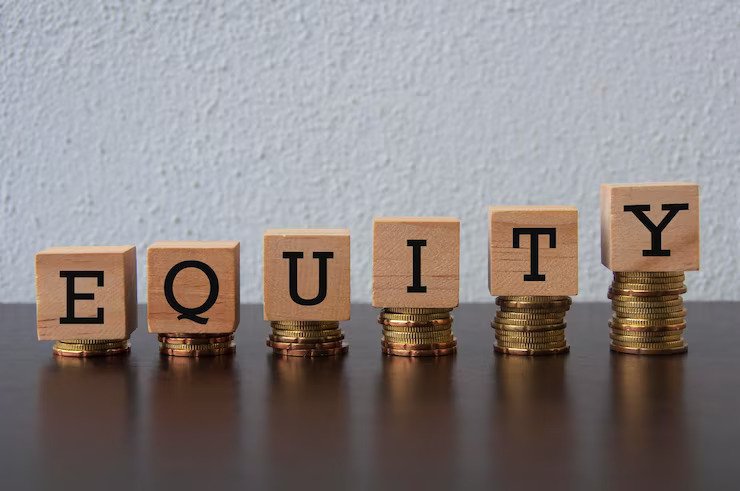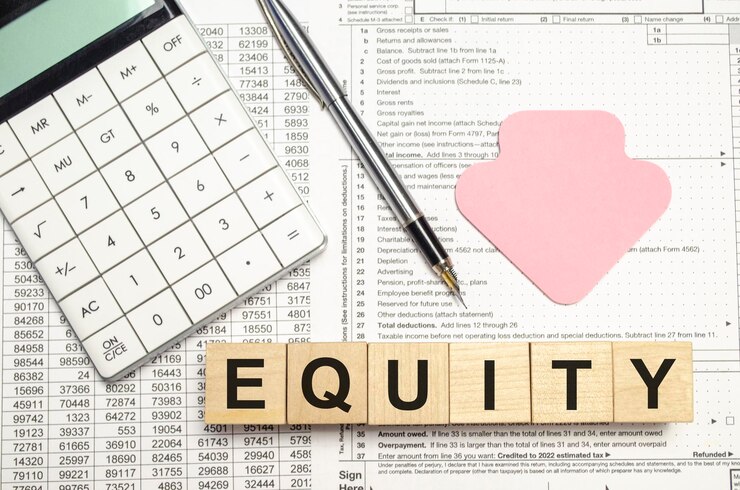How To Find The Equity Multiplier
5 Mins Read
Published on: 23 August 2023
Last Updated on: 06 January 2024

toc impalement
Investing in the financial markets demands a deep understanding of a myriad of complex indicators and ratios. One of the crucial metrics often used to measure a company’s financial health is the ‘Equity Multiplier‘.
This ratio provides invaluable insight into a company’s financial structure. It specifically focuses on how a company is funding its assets and whether it’s leveraging debt or equity. As such, it plays a pivotal role in influencing investment decisions. Investors get a huge help in measuring the financial risk associated with a specific company.
The equity multiplier, in essence, is a gauge of a firm’s financial leverage. It ends up revealing the proportion of its total assets financed by stockholders’ equity. It offers a clear picture of the company’s dependency on borrowed money and enables investors to make informed judgments. Hence, there’s no risk level in the firm any longer.
Understanding The Basics Of The Equity Multiplier
In the world of finance, leverage is a strategy that involves using borrowed funds with the expectation that the profits generated will be greater than the interest payable. While leverage can significantly boost potential returns, it also adds an element of risk, as the company is under obligation to repay its debt irrespective of its financial performance. This is exactly where the Multiplier comes into play, acting as a mirror that reflects a company’s financial leverage.
The equity multiplier happens to be a financial ratio that gives investors insight into a company’s capital structure by indicating how much of the company’s total assets are being financed by the equity of the shareholder. In simple terms, it provides an answer to the question: “How much of the company’s assets are owned outright by the shareholders.” Or “How much are you facing debts?”
To put it into perspective, an equity multiplier that is high would suggest that a larger proportion of the company’s assets are debt. This simply implies higher financial risk due to the obligations relevant to borrowed funds.
Conversely, an equity multiplier that is low would indicate a greater proportion of assets financed by shareholders’ equity, suggesting a safer financial position, albeit with potentially lower returns due to less leveraged capital.
The equity multiplier ratio is critical for investors as it helps them understand the level of financial risk a company is willing to take. By examining how a company is financing its assets, whether it’s leaning towards debt or equity, investors can gauge the potential risk or reward of their investment.
This allows them to tailor their investment strategies to their individual risk tolerance and investment goals, making the equity multiplier a valuable tool in the investor’s arsenal.
The Fundamentals: Equity Multiplier Formula

Unraveling the components of this equity multiplier is key to fully understanding its essence. The formula for calculating this equity multiplier is rather straightforward, and you can find it here:
Equity Multiplier = Total Assets / Shareholder’s Equity:
- Total Assets: This represents the total resources owned or controlled by a company, which can generate future economic benefits. Assets include items like inventory, property, cash, accounts, and investments receivable. Essentially, these are resources that the company can use to produce goods or services, settle debts, or disburse to shareholders.
- Shareholder’s Equity: Also called shareholders’ equity or stockholders’ equity, this figure represents the net value of a company – what’s left after you subtract total liabilities from total assets. In essence, it’s what the shareholders would theoretically own after the company’s liquidation and subsequently, they would pay all its debts. Shareholder equity consists of the initial capital that shareholders invest and any additional capital investments, retained earnings, and less dividends paid out.
A Step-By-Step Guide To Finding Equity Multiplier
Discovering the equity multiplier of a company involves sourcing the correct data, identifying the necessary components from financial statements, and then applying the formula. Peregrine Private Capital can help with your 1031 exchange questions and needs. But here’s a small idea of how it’s done:
Sourcing the necessary financial data.
The first step in finding the equity multiplier involves sourcing the company’s financial data. This information can be obtained from several sources, including a company’s annual report, quarterly earnings reports, or Securities and Exchange Commission (SEC) filings such as the 10-K or 10-Q reports. These reports are often available on the company’s investor relations webpage.
Identifying total assets and shareholder’s equity on the balance sheet.
After obtaining the necessary financial documents, the next step is to identify the values for total assets and shareholder’s equity. These figures are visible on the company’s balance sheet. The balance sheet is a snapshot of a company’s financial condition at a specific point in time.
You can usually find the list of total assets at the top of the balance sheet. This may include items such as cash, accounts receivable, inventory, and property. Shareholder’s equity, found at the bottom of the balance sheet, represents the residual interest in the assets of an entity after deducting liabilities. In simpler terms, it’s the remaining for shareholders if the company is to pay off all its debts.
Applying the formula and calculating the equity multiplier.
The final step involves applying the equity multiplier formula. You divide the total assets by the shareholder’s equity to get the equity multiplier. The resulting figure tells you how much of the company’s assets have been financed by debt as opposed to shareholders’ equity.
Remember, a high equity multiplier indicates a higher degree of financial leverage and, consequently, a higher level of financial risk. On the other hand, a lower equity multiplier suggests a company is primarily financing its assets through equity. This might be less risky but may offer lower potential returns.
Conclusion
In conclusion, the equity multiplier happens to be a powerful tool when used appropriately. One should always use it in conjunction with other financial metrics.
As an investor, understanding how to find and interpret the equity multiplier can offer a competitive edge. Thus allowing you to make more informed and confident investment decisions. The world of investing might be complex. But with the right tools and knowledge, it becomes a realm of opportunities.
Read Also:


















Comments Are Closed For This Article